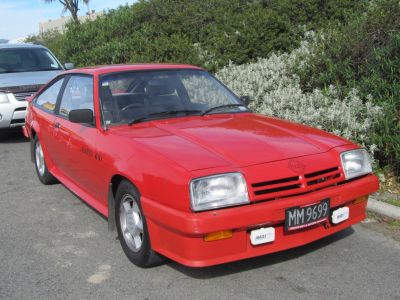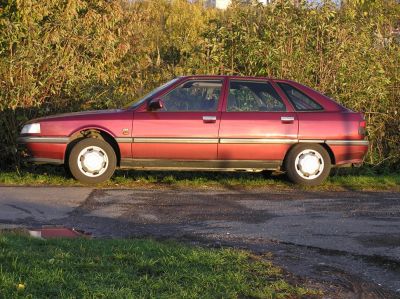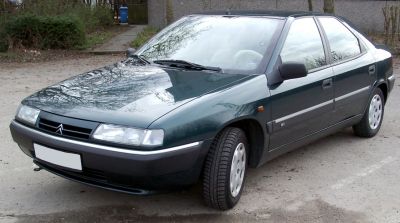 1983 Toyota Camry I Hatchback (V10) Dimensions, Size & Specs
1983 Toyota Camry I Hatchback (V10) Dimensions, Size & Specs
Measurements of the 1983 Toyota Camry I Hatchback, engineered for optimal performance and comfort
| Dimensions | |
|---|---|
| Length: | 4415 mm173.8 in14.5 ft |
| Width: | 1690 mm66.5 in5.5 ft |
| Height: | 1370 mm53.9 in4.5 ft |
| Trunk Capacity: | 380 liter13.4 cu ft |
| Trunk Capacity (Max): | 1201-1420 liter42.4-50.1 cu ft |
| Weight Specifications | |
| Curb Weight: | 1095 kg2414 lbs |
| Tire Specifications | |
| Rims Size: |
|
| Tire Size: |
|
The Toyota Camry I Hatchback (V10), produced from 1982 to 1986, represents the early generation of the Toyota Camry lineup, specifically designed as a compact hatchback for urban and practical use. This first-generation hatchback model stretches to a length of 4415 mm (173.8 inches), with a width of 1690 mm (66.5 inches) and stands at a height of 1370 mm (53.9 inches), making it fairly compact and aerodynamic for its time.
Weighing in at 1095 kg (approximately 2413 lbs), this lightweight vehicle balances efficiency and maneuverability, which was ideal for city driving and daily commuting. The hatchback body style enables flexible cargo management, starting with a modest luggage capacity of 380 liters (13.4 cubic feet) behind the rear seats. When the rear seats are folded down, this expands significantly to between 1201 and 1420 liters (42.4 to 50.1 cubic feet), providing ample space for larger loads or utility transport.
The Camry I Hatchback rides on 13-inch rims, paired with tire sizes of 185/70 R13, contributing to a smooth and controlled ride quality. The dimensions reinforce the Camry's role as a compact hatchback in the early 1980s, blending Toyota's reputation for reliability with practical size and weight for its segment.
Overall, the 1983 Toyota Camry I Hatchback (V10) is a classic example of early compact hatchback design, combining functional cargo space, manageable dimensions, and light curb weight, which offered drivers a reliable and practical vehicle for everyday use during its production run.
Discover the standout features that make the 1983 Toyota Camry I Hatchback a leader in its class
Have a question? Please check our knowledgebase first.
The 1983 Toyota Camry I Hatchback (V10) measures 4415 millimeters (173.8 inches) in length and 1690 millimeters (66.5 inches) in width, making it moderately sized for a compact hatchback of its era. These dimensions contribute to a balanced footprint that provides comfortable interior space while maintaining manageable external size for city driving and parking.
The Camry I Hatchback (V10) stands at 1370 millimeters (53.9 inches) tall. This relatively low height helps lower the car's center of gravity, improving handling and stability on the road. The lower profile also aids in parking, especially in garages with limited clearance, enhancing aerodynamics and contributing to the car's sleek hatchback design.
The Camry I Hatchback (V10) has a curb weight of about 1095 kilograms (2414 pounds). This weight makes the vehicle light compared to larger sedans, which positively impacts its fuel efficiency, acceleration, and handling. The lightweight design contributes to more responsive driving dynamics and better fuel economy, typical of Toyota's engineering focus during this time.
With the rear seats upright, the 1983 Toyota Camry I Hatchback offers 380 liters (about 13.4 cubic feet) of luggage capacity, which is adequate for everyday use like groceries or small luggage. Folding down the rear seats significantly expands the space to between 1201 and 1420 liters (approximately 42.4 to 50.1 cubic feet), allowing for the transport of larger items or bulkier cargo, enhancing its versatility as a hatchback.
The vehicle is equipped with 13-inch rims and tires sized at 185/70 R13. This combination balances comfort and road grip, typical of compact hatchbacks of the early 1980s. The tire width and profile provide a comfortable ride with adequate grip to suit everyday driving conditions, although tire and rim sizes would be considered small by modern standards, reflecting the design priorities of the period.
With dimensions of 4415 mm (173.8 inches) in length, 1690 mm (66.5 inches) in width, and a height of 1370 mm (53.9 inches), the 1983 Toyota Camry I Hatchback comfortably fits into most standard garages, which typically measure around 2440 mm (96 inches) wide and 4875 mm (192 inches) deep. Its moderate size offers easy parking and maneuverability indoors, though owners should also consider space for opening doors and additional storage when parking.
The 1983 Camry I Hatchback (V10) represents the very first Camry generation, so it technically doesn't have a predecessor. However, compared to older compact hatchbacks of the early 1980s, its size is fairly typical but slightly more aerodynamic and refined in style. The V10 set the stage for subsequent Camry models by establishing dimensions and layout suited for practical, efficient everyday driving.
The 1983 Toyota Camry I Hatchback (V10) was competitive in size and functionality when compared to other compact hatchbacks of the early 1980s such as the Honda Civic and Nissan Pulsar. Its length of 4415 mm placed it on the larger end of the compact hatchback spectrum, providing more interior and cargo space. With its reliable engineering, light weight, and reasonable luggage capacity, it offered a solid alternative for buyers seeking practicality and fuel efficiency combined with everyday driving ease.
The 1983 Toyota Camry I Hatchback (V10) was notable for being Toyota's first attempt to replace the Corona with a more modern and efficient compact hatchback. It featured a front-engine, front-wheel-drive layout, which was a shift toward more fuel-efficient and practical designs. The model emphasized economy, reliability, and practicality, with a lightweight structure of 1095 kg and modest dimensions that made it suitable for urban and suburban driving. Its luggage flexibility and straightforward engineering helped establish the Camry name in global markets.
Owners of the 1983 Toyota Camry I Hatchback (V10) can expect a straightforward, reliable vehicle that offers good fuel efficiency and easy handling for its time. Its lightweight design and compact size afford nimble maneuverability, making it well-suited for city driving and parking. The hatchback format provides flexibility for cargo, and Toyota’s reputation for durability means maintenance and long-term ownership costs are generally reasonable. While performance and features may be basic by modern standards, it remains a practical classic example of early 1980s Japanese automotive design.
Discover similar sized cars.

| Production: | 1982-1988 |
|---|---|
| Model Year: | 1982 |
| Length: | 4384 mm172.6 in |
| Width: | 1686 mm66.4 in |
| Height: | 1320-1340 mm52.0-52.8 in |

| Production: | 1988-1994 |
|---|---|
| Model Year: | 1986 |
| Length: | 4460 mm175.6 in |
| Width: | 1730 mm68.1 in |
| Height: | 1415 mm55.7 in |

| Production: | 1993-1997 |
|---|---|
| Model Year: | 1993 |
| Length: | 4444 mm175.0 in |
| Width: | 1755 mm69.1 in |
| Height: | 1377-1399 mm54.2-55.1 in |
